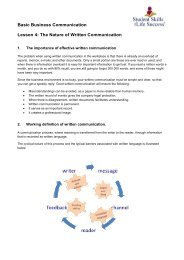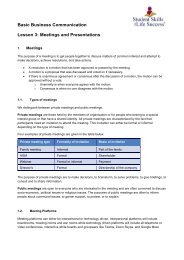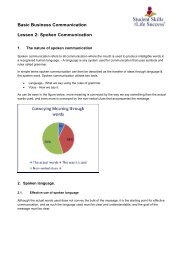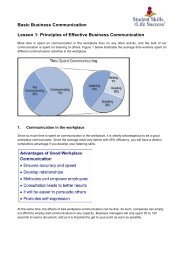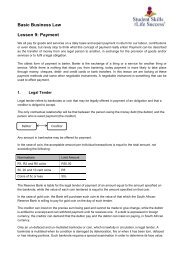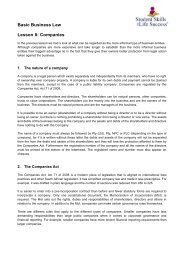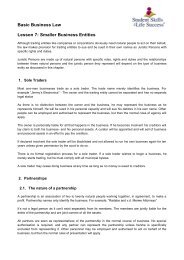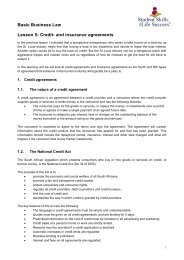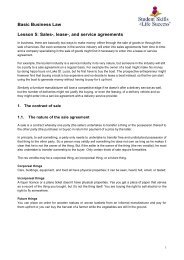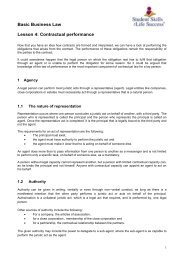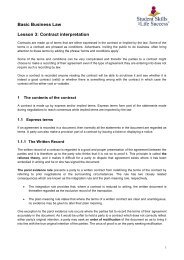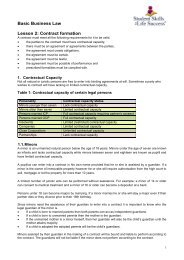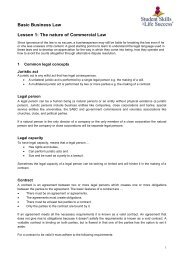Purchasing and Financing 2024
Purchasing- and Financial Management For 2nd year CATS learners. Aligned to the outcomes of the German accredited certification: “Industrie Kaufmann/frau”.
Purchasing- and Financial Management
For 2nd year CATS learners.
Aligned to the outcomes of the German accredited certification: “Industrie Kaufmann/frau”.
You also want an ePaper? Increase the reach of your titles
YUMPU automatically turns print PDFs into web optimized ePapers that Google loves.
ent, <strong>and</strong> wage expenses, but before deducting interest <strong>and</strong> income tax expenses. It’s also<br />
referred to as EBIT (earnings before interest <strong>and</strong> income taxes) <strong>and</strong> is a measure of a<br />
company's profitability from operations.<br />
As a percentage of sales, it is called operating margin, <strong>and</strong> calculated as follows:<br />
Operating Margin = Operating Income/Sales<br />
Both are key measures of how effective a company is at controlling the costs <strong>and</strong><br />
expenses associated with its normal business operations.<br />
The 80/20 Principle<br />
The 80/20 Principle was devised by Vilfredo Pareto (1848-1923), to demonstrate that 80%<br />
of wealth comes from 20% of the population. This principle could also be applied outside<br />
economics to just about anything.<br />
When applied to a company’s product line it means that 80% of a company's revenue<br />
comes from 20% of the products. Off cause the 80/20 Principle can also apply to revenue<br />
<strong>and</strong> expenses. Roughly 80% of your sales may come from 20% of your products. Similarly,<br />
80% of your sales may be supported by 20% of your expenses.<br />
Evaluating the Growth of a Business<br />
The final number to look at on the income statement is net income as.<br />
Net Profit Margin = Net Income/Sales<br />
The Income Statement separates Operating Revenue, revenue generated from the main<br />
operations of the business, from non-operating revenue. The Income Statement also<br />
separates Operating Expenses, those expenses required to support the main operations of<br />
the business, from non-operating expenses. Income Taxes <strong>and</strong> interest are considered<br />
non-operating expenses.<br />
To evaluate the growth of the company these figures must of cause be compared with<br />
those of preceding periods to see if growth rate is declining or improving.<br />
Evaluating the Returns on Investment in a Company<br />
a. Return on Equity<br />
Return on Equity (ROE) is one of the most important financial ratios in business. It<br />
measures how well a company used Owner's Equity to generate profits <strong>and</strong> is regarded is<br />
the best indicator of bottom-line performance by some analysts.<br />
48




